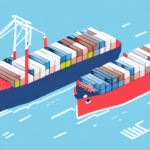Understanding the Importance of Shipping in Ecommerce
Shipping is a critical element of ecommerce that can either make or break a business. It serves as the bridge between customers and the products they have ordered. Investing in a robust and reliable shipping process ensures that customers receive their orders on time and in excellent condition.
Moreover, shipping plays a significant role in customer satisfaction and loyalty. A smooth and hassle-free shipping experience can leave a positive impression on customers, leading to repeat purchases and word-of-mouth referrals. Conversely, delayed or damaged shipments can result in negative reviews, customer complaints, and ultimately, loss of business.
Selecting the Right Shipping Carrier
Factors to Consider When Choosing a Carrier
- Price: Compare rates to ensure competitive pricing without compromising quality.
- Delivery Speed: Assess the carrier’s ability to deliver within desired timeframes.
- Tracking Options: Ensure comprehensive tracking features for transparency.
- Customer Service: Evaluate the responsiveness and support provided by the carrier.
- International Shipping Capabilities: If applicable, consider the carrier’s global reach.
Reliability and Performance
Select carriers with a proven track record of on-time deliveries and careful handling of packages. Reliable carriers minimize the risk of delays and damages, enhancing overall customer satisfaction.
Integration with Ecommerce Platforms
Choose carriers that seamlessly integrate with your ecommerce platform. This integration streamlines the shipping process, from order placement to tracking, saving time and reducing potential errors.
Optimizing Shipping Costs
Negotiating Better Shipping Rates
Negotiating favorable shipping rates can significantly reduce costs and boost profitability. Strategies include:
- Consolidating Shipments: Combine orders to benefit from bulk shipping discounts.
- Volume-Based Discounts: Leverage high shipping volumes to secure lower rates.
- Using Third-Party Logistics Providers: These providers often have negotiated rates with carriers.
Offering Free Shipping
While offering free shipping can attract and retain customers, it’s essential to weigh the pros and cons:
- Pros: Increased sales, improved customer satisfaction, and higher conversion rates.
- Cons: Reduced profit margins, increased shipping costs, and potential for order abuse.
To mitigate cons, consider setting minimum order values or using free shipping as a promotional tool rather than a permanent offering.
Enhancing Packaging and Fulfillment
Improving Packaging for Safe Delivery
Effective packaging ensures that products arrive safely and in good condition. Use appropriate materials to secure items and prevent movement within the box. Additionally, consider eco-friendly packaging options to appeal to environmentally conscious customers and reduce your carbon footprint.
Streamlining the Order Fulfillment Process
A streamlined fulfillment process accelerates shipping times. Implementing automation tools such as inventory management systems and order tracking software can enhance efficiency. Organize your warehouse with clear systems for receiving, storing, and picking products to reduce retrieval times and expedite order processing.
Effective Customer Communication
Keeping Customers Informed
Regular communication about order status boosts customer trust and satisfaction. Provide updates on:
- Order confirmation
- Shipping initiation
- Expected delivery dates
- Any potential delays
Providing Tracking Information
Offering tracking numbers allows customers to monitor their shipments in real-time, enhancing transparency and reducing anxiety related to order delivery.
Addressing Issues Promptly
If problems arise, such as delays or lost packages, communicate proactively with customers and offer solutions like refunds or replacements to maintain trust and loyalty.
Leveraging Technology for Shipping
Utilizing Shipping Software
Advanced shipping software automates and optimizes shipping tasks, from label creation to tracking. This technology can integrate with your ecommerce platform to streamline operations and reduce manual errors.
Data Analytics and Performance Tracking
Implementing data analytics allows you to monitor key performance indicators (KPIs) such as:
- On-time delivery rates
- Shipping costs
- Customer feedback
Analyzing these metrics helps identify areas for improvement and optimize your shipping strategy.
Future Trends in Ecommerce Shipping
Adoption of Autonomous Delivery Vehicles
Companies are exploring autonomous vehicles for deliveries, which promise faster and more cost-effective shipping by operating 24/7 without the need for human drivers.
Sustainable Shipping Practices
With growing environmental awareness, ecommerce businesses are adopting sustainable practices such as:
- Using biodegradable or recyclable packaging materials
- Optimizing delivery routes to reduce emissions
- Partnering with carbon offset programs
Enhanced Tracking Capabilities
Advancements in tracking technology provide customers with more precise and real-time updates on their shipments, improving the overall shipping experience.
Conclusion: Takeaways for Successful Ecommerce Delivery
Shipping is a critical component of ecommerce success. By implementing these essential shipping tips, you can enhance your shipping process, reduce costs, and boost customer satisfaction:
- Select the right shipping carrier based on your business needs.
- Negotiate better shipping rates to improve profitability.
- Optimize packaging to ensure safe and secure deliveries.
- Streamline your order fulfillment process for faster shipping.
- Communicate effectively with customers throughout the shipping process.
- Leverage technology to automate and analyze your shipping operations.
- Stay informed about future shipping trends to maintain a competitive edge.
With the right strategies in place, you can ensure the successful delivery of your products to customers worldwide, fostering growth and loyalty for your ecommerce business.






















